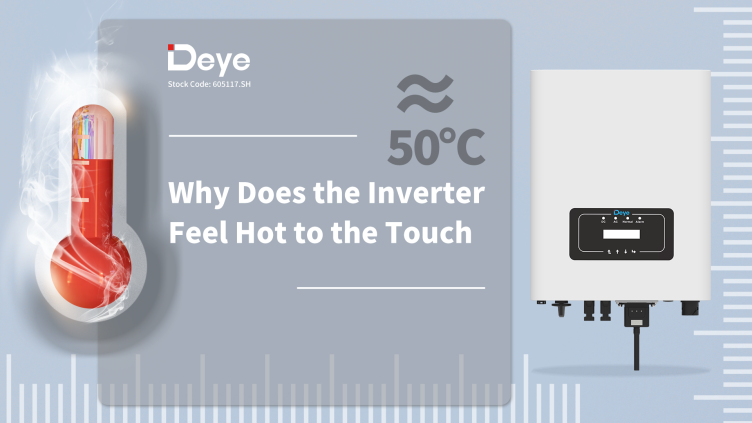Blog
Why Does Your Inverter Feel Hot? Here’s What You Need to Know
2025-08-04 | Eric

Have you ever touched your inverter on a warm day and felt a bit startled by how hot it was? You’re not alone. Many people wonder whether a hot inverter enclosure means something’s wrong—or if it’s just part of the design.
Let’s clear things up. In this article, we’ll explain why inverters get hot, whether it’s normal or concerning, and how the cooling system behind your inverter works to keep everything in check.
Why Does an Inverter Get Hot?
At its core, an inverter is a powerful electronic device converting DC (direct current) into AC (alternating current). Just like your laptop or phone heats up during heavy use, inverters generate heat while powering your equipment.
This heat isn’t a design flaw—it’s a natural part of the process. But if it builds up too much and isn’t managed properly, it can impact performance, efficiency, and lifespan.
What Causes the Enclosure to Feel Hot?
Here’s where things get interesting: the outer enclosure of your inverter is actually part of its cooling system.
Think of it like the metal body of a thermal cup. It transfers internal heat to the outside to help things cool down inside. In most inverters, materials like aluminum are used because they’re great at conducting heat quickly.
So when you touch the casing and it feels warm—or even hot—that usually means the system is doing exactly what it’s supposed to do: getting heat out of the core and into the air.
Why Proper Heat Dissipation Matters
All electronic components in an inverter are rated to operate within specific temperature ranges. If the internal temperature gets too high, it can:
- Degrade performance
- Reduce the inverter's lifespan
- Increase the risk of failure
That’s why thermal management is critical. Without it, the inverter can overheat, especially in direct sunlight or during high-load usage.
How Inverters Keep Themselves Cool
Modern inverters use a combination of cooling methods to stay within safe temperature limits:
- Natural Cooling: Low-power inverters rely on passive cooling. Aluminum heat sinks are built in to increase surface area and allow air to absorb and carry away heat.
- Forced Air Cooling: Higher-powered models go one step further with internal fans. These fans automatically kick in when things get too hot, pushing cooler air through the system and helping regulate internal temperatures.
- Liquid Cooling (for specialized systems): Some industrial-grade inverters use advanced liquid cooling systems for even more efficient heat management.
The Enclosure’s Hidden Role
Beyond housing the internal components, the enclosure itself plays a key role in thermal management. In many inverter designs:
- The heat sink is integrated directly into the enclosure, allowing heat from internal parts to move outward efficiently.
- Internal airflow (or convection) helps transfer heat to the enclosure.
- The enclosure then releases that heat into the environment.
This dual dissipation system (direct conduction + air convection) helps maintain a stable internal temperature even during hot summer days.
✅ So… Is It Normal for My Inverter to Feel Hot?
Yes—especially in the summer, when outdoor temperatures are already high. It’s not unusual for the surface of the enclosure to reach up to 60°C (140°F) in some cases.
As long as:
- The inverter isn’t showing error messages,
- Performance remains stable, and
- The area is well-ventilated...
...your system is likely operating just fine.
Final Tips for Better Inverter Cooling
To help your inverter stay cool and perform at its best:
- Install it in a shaded, well-ventilated location
- Avoid placing objects too close to it—give it room to "breathe"
- Clean any dust from vents or fans periodically
- Consider models with active cooling features if operating in hot climates
Popular Articles
Contact Details
Worktime :Monday to Friday 9am - 6pm (HKT)
WhatsApp/Wechat/Mobile :+86XXXXX
Email : info@lifepo4cellstore.com
